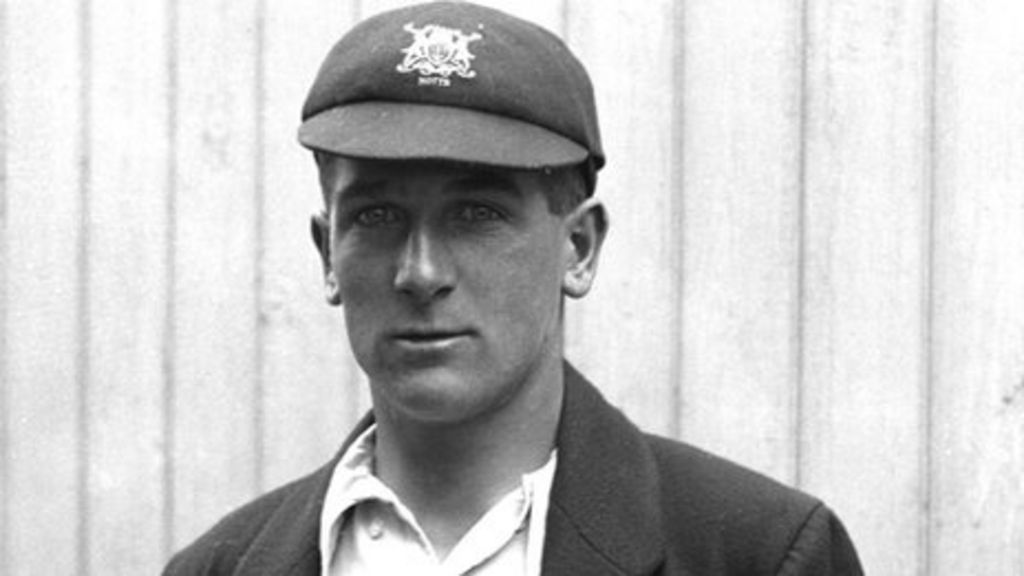When Harold Larwood steamed in amidst Bodyline’s contentious 1932-33 Ashes, his express pace and unwavering accuracy established foundations for generations of quick bowling firebrands thereafter through a quintessentially determined tale kindled in Nottingham’s coal dust furnaces.
Though what ensued proved a cricketing Ragnarök, Larwood’s Folkish emergence already foreshadowed the storm his humble background would soon gather upon cricket’s established elite.
As controversy swirled and stuffed-shirt Victorian gentry mobilized moral defenses, Larwood persisted apolitically loyal, his sole doctrines being competition unto victory for his chosen clan and personal accountability for conduct within.
Run-up rhythm never wavered even as powers scapegoated his rare gifts bridling class tensions momentarily. Afterwards, eerie silence persisted in place of plaudits despite admirable embracing of duty amid impossible expectations rarely emulated by privileged counterparts then or since.
Article Highlights
Hide- Harold Larwood was born in a working-class family in Nuncargate, Nottinghamshire in 1904 and developed resilience and work ethic from his upbringing.
- He achieved fame as a fast bowler during the 1928-1929 Ashes tour and played a key role in the infamous Bodyline series in 1932-33, helping England win the Ashes.
- The Bodyline tactics, involving aggressive bowling directed at the bodies of Australian batsmen, led to diplomatic tensions between England and Australia and received criticism.
- Larwood's career statistics include playing 21 Test matches for England, claiming 78 wickets with a bowling average of 28.35, and he is remembered as a yardstick for pace bowling and sportsmanship.
In the end, beyond wickets lies deeper impact – Larwood’s modest journey established templates for fast bowling specimens who themselves grew contending with Australian power over subsequent decades through imitation of his unrelenting excellence both on-field and preserving dignity off it when convenience yields to principle. His lasting identity stays entwined with prophecying cricket’s eventual modernism.
Early Life and Background
Harold Larwood, whose formidable legacy as a fast bowler began in the coal-mining village of Nuncargate, Nottinghamshire, was born on November 14, 1904, into a working-class family that valued the grit and resilience characteristic of England’s industrial heartland.
The socio-economic conditions of the time, marked by laborious work and minimal prospects for upward mobility, forged in Larwood a steely determination. This environment was pivotal in instilling the discipline and physical robustness that would later define his cricketing prowess.
Sydney Barnes
When Sydney Barnes marked his popping crease run-up in the early 20th century, bemused batsmen ... Read More
His formative years were spent amidst the soot and toil of the mines, a stark contrast to the manicured cricket greens where he would eventually make his mark.
The juxtaposition of his early life’s hardships against the backdrop of the gentleman’s game he excelled at is a testament to the transformative power of sport as a means of liberation.
Larwood’s journey from the depths of the mines to the summits of sporting acclaim embodies the potential for transcendence through sheer perseverance and skill.
Analyzing Larwood’s upbringing elucidates the foundational attributes that contributed to his success: resilience against adversity, a work ethic carved from necessity, and an undying passion for cricket that offered a glimpse of freedom from the confines of his origins.
Harold Larwood: Rise to Cricketing Fame
The ascent of Harold Larwood in the cricketing world was marked by his extraordinary pace and accuracy, which quickly distinguished him as one of the most feared fast bowlers of his era.
His journey to prominence can be deconstructed into several pivotal moments:
- Nottinghamshire Debut: Larwood’s professional debut for Nottinghamshire in 1924 was a display of raw talent and potential, as he showcased his prowess by taking wickets with his rapid deliveries.
- International Recognition: He was selected for the England team in 1926, an acknowledgment of his growing reputation and a testament to his remarkable skill set.
- Ashes Dominance: His performance in the 1928-1929 Ashes tour in Australia solidified his fame, where he terrorized the Australian batsmen with his ferocious speed.
- Bodyline Series: The 1932-1933 Ashes series, known as the ‘Bodyline series’, was where Larwood’s name became synonymous with cricketing legend, as his role in implementing the controversial tactic brought him both acclaim and notoriety.
An analytical dissection of Larwood’s rise reveals a cricketer whose career trajectory was shaped by relentless dedication and an unyielding quest for mastery over his craft.
His story is not merely one of athletic prowess, but an authoritative narrative of a man breaking the shackles of convention, liberating the sport with his revolutionary approach to bowling.
Bodyline Series Controversy
Erupting onto the cricket stage, the Bodyline series controversy became a defining moment in Larwood’s career. It not only challenged the sportsmanship and laws of cricket but also stirred international diplomatic tensions.
Instrumental to this contentious tactic, Larwood’s ferocious fast bowling, directed at the bodies of Australian batsmen during the 1932-33 Ashes series, was a deliberate strategy devised by England’s captain Douglas Jardine to neutralize the prolific Don Bradman.
With analytical precision, it is crucial to understand the tactical underpinnings of the Bodyline approach. It involved a leg-side field to exploit the physical and psychological vulnerabilities of batsmen, challenging the conventions of the game.
This method, while within the rules, was seen as an affront to the spirit of cricket. Larwood’s unwavering execution of the strategy led to significant injuries among Australian players, culminating in a crescendo of acrimony that transcended the sport.
Authoritative discourse surrounding the series highlights the aftermath: diplomatic cables were exchanged between the governments, and cricketing relations between England and Australia reached a nadir.
The controversy prompted a reevaluation of cricket laws, leading to amendments that outlawed such aggressive bowling tactics. Larwood, a central figure in the saga, emerged with his reputation as a formidable bowler intact but became a symbol of a strategy that sought victory at the expense of cricket’s cherished ethos.
Harold Larwood: Career Statistics Breakdown
While Larwood’s role in the Bodyline series etched his name in cricket history, a deeper examination of his career statistics offers insights into the skill and impact that characterized his tenure as one of England’s premier fast bowlers. Larwood’s figures speak to a career marked by ferocity and precision, harnessing speed and movement to outwit batsmen.
Here is a breakdown of his international career numbers:
- Matches Played: Larwood appeared in 21 Test matches for England, a figure limited by both the controversy of the Bodyline series and injuries sustained during his career.
- Wickets Taken: He claimed 78 wickets at the international level, showcasing his ability to consistently penetrate batting defenses.
- Bowling Average: His bowling average stood at an impressive 28.35, underlining his effectiveness at claiming wickets economically.
- Best Bowling Figures: Larwood’s best bowling in an innings was 6 wickets for 32 runs against Australia, a testament to his capacity to dominate even the most formidable opponents.
Harold Larwood’s statistics, though not voluminous, are reflective of a bowler who could single-handedly change the course of a game.
His legacy, quantified not just by numbers but also by the fear he instilled in batsmen, underscores the potency of his bowling prowess and his enduring influence on the game.
Post-Cricket Life and Legacy
Following his retirement from cricket, Harold Larwood embarked on a quieter chapter of life, yet his legacy continued to resonate powerfully within the sport, as his name became synonymous with both controversy and cricketing excellence.
Larwood’s post-cricket life was marked by a steadfast disengagement from the sport’s limelight, yet he remained an enduring figure for cricket historians and aficionados, who dissected his role in the infamous Bodyline series with meticulous detail.
A detailed examination of Larwood’s subsequent years reveals a man who, despite the polarizing nature of his cricketing career, found a semblance of peace away from the pitch.
He emigrated to Australia, the very nation where his bowling once sparked diplomatic unease, and this move was interpreted as an act of resolution, embodying the spirit of cricket’s capacity for healing old wounds.
Larwood’s enduring legacy is enshrined in the annals of cricket history, serving as a yardstick for pace bowling and sportsmanship. His name evokes a narrative of resilience and redemption, inspiring subsequent generations to approach the game with a blend of fervor and fairness.
As an authoritative figure in cricket lore, Larwood’s life post-retirement underpins the transformative power of sport to forge lasting legacies that transcend on-field achievements.
Final Take
Harold Larwood’s cricketing legacy remains indelibly etched in the annals of the sport, not least for his role in the Bodyline series. His career statistics, while impressive, cannot fully encapsulate his impact on the game, which extends beyond mere numbers.
Larwood’s post-cricket life, although quieter, continued to reflect the resilience and strength that characterized his playing days. As a figure of both controversy and admiration, Larwood’s contributions to cricket are enduring and multifaceted.

















